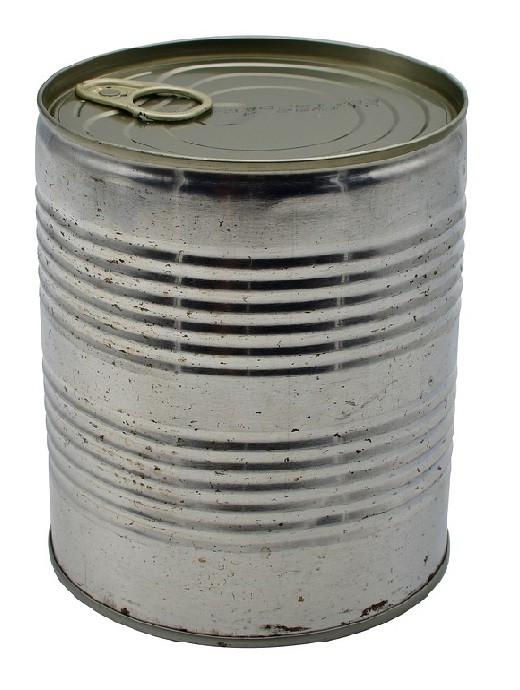Automotive Shop Waste Management: Environmental Protection Guide
Understand automotive shop waste
Automotive repair and maintenance shops generate various waste products that can pose significant environmental hazards if not handle right. From use motor oil to chemical solvents, these materials contain compounds that may contaminate soil, water sources, and air quality when improperly dispose of.
The environmental protection agency (eEPA)classify many automotive shop byproducts as hazardous waste, require specific handling and disposal methods. Understand these classifications is the first step toward responsible waste management.
Common hazardous materials in automotive shops
Use motor oil and filters
Use motor oil contain heavy metals, such as lead, cadmium, and arsenic, along with petroleum hydrocarbons that can be exceedingly harmful to ecosystems. Scarce one gallon of improperly dispose motor oil can contaminate up to one million gallons of fresh water.
Oil filters present a dual challenge, contain both metal components and residual oil. These must be decent drain before disposal, with the oil collect for recycling and the metal components send to metal recyclers.

Source: blog.ammex.com
Antifreeze and coolants
Ethylene glycol, the primary component in most antifreeze formulations, is extremely toxic to humans and wildlife. Use antifreeze oftentimes contain heavy metals from engine wear, make it eventide more hazardous. Proper collection and recycling of antifreeze prevent these toxins from enter water systems where they can harm aquatic life and potentially contaminate drinking water.
Brake fluids
Brake fluids typically contain polyethylene glycol ethers and can absorb moisture over time. Use brake fluid may contain heavy metals from brake system components. These fluids should ne’er be mixed with other automotive fluids and require specific disposal methods.
Transmission and power steering fluids
These petroleum base fluids contain additives and breakdown products that can be harmful to the environment. Like motor oil, they should be collect individually and send to authorize recycling facilities.
Battery acid and use batteries
Lead acid batteries contain sulfuric acid and lead, both extremely toxic substances. Battery acid can cause severe burns and environmental damage if spilled. The lead components can cause neurological damage in humans and wildlife if they leach into soil or water systems.
Most automotive batteries are extremely recyclable, with up to 98 % of components being recoverable for reuse in manufacture new batteries.
Clean solvents and degreases
Parts cleaning solutions oftentimes contain volatile organic compounds (vvows)that can evaporate into the air, contribute to air pollution and potential respiratory issues. Many besides contain chemicals that are persistent environmental pollutants.
Paint and body shop waste
Automotive paints, thinners, and primers contain numerous hazardous compounds, include heavy metals and volatile organic compounds. Overspray, leftover paint, and use paint containers all require proper handling. Paint booth filters capture airborne particles and must be disposed of as hazardous waste in most jurisdictions.
Shop rags and absorbents
Materials used to clean up spills or wipe down parts become contaminate with the substances they absorb. These itemscan’tt merely be thrown in regular trash and oftentimes require special handling as hazardous waste.
Environmental impact of improper disposal
Water contamination
When automotive fluids are poured down drains, storm sewers, or onto the ground, they finally make their way into water systems. Merely a small amount of these substances can render large volumes of water unsafe for human consumption and deadly to aquatic ecosystems.
Petroleum products create a film on water surfaces that prevent oxygen transfer, suffocate aquatic life. Heavy metals in these fluids can accumulate in the food chain, finally affect humans who consume fish from contaminate waters.
Soil contamination
Automotive chemicals spill onto soil can persist for years, create long term environmental hazards. Contaminate soil become unable to support plant life and can leach toxins into groundwater. Remediation of contaminate soil is passing costly and sometimes impossible to amply achieve.
Air quality issues
Volatile components in solvents, fuels, and other automotive chemicals evaporate and contribute to air pollution. Some of these compounds react with sunlight to form ground level ozone, a major component of smog that cause respiratory problems.
Wildlife impact
Animals expose to automotive waste can suffer acute poisoning or chronic health effects. Birds, mammals, and reptiles may ingest contaminate water or soil, while aquatic species can absorb toxins direct through their skin or gills.
Proper disposal methods
Recycle use motor oil
Use motor oil should ne’er be poured down drains or onto the ground. Rather, it should be collect in appropriate containers and take to recycling centers or participate auto parts stores. Many locations offer oil recycling services at no charge.
Re refined motor oil require 85 % less energy to produce than oil make from crude oil. One gallon of use motor oil can be re refined into 2.5 quarts of lubricate oil, make recycle both environmentally and economically beneficial.
Antifreeze recycling
Used antifreeze should be store in clear label containers separate from other fluids. Many automotive service centers have antifreeze recycling equipment that filter contaminants and restore the fluid’s properties, allow it to be reuse.
Battery handling and recycling
Use automotive batteries should be store in an upright position in a leakproof container until they can be ttakento a recycling facility. Most retailers that sell new batteries will accept will use ones for recycling, oftentimes will offer a core charge refund as an incentive.
Parts cleaning systems
Modern parts washers use environmentally friendly solvents or aqueous cleaning solutions that reduce hazardous waste generation. Closed loop recycling systems filter and reuse cleaning solutions, minimize waste and reduce costs.
Some service providers offer solvent delivery and waste pickup services, handle the recycling or proper disposal of use cleaning solutions.
Paint and solvent disposal
Leftover paints and solvents should ne’er be allowed to evaporate as a disposal method. Alternatively, they should btakenke to hazardous waste collection facilities. Some communities offer special collection days for these materials.
Water base paints are less hazardous than solvent base ones, but distillery require proper disposal. Totally dry paint cans may be acceptable in regular trash in some jurisdictions, but liquid paint ne’er is.
Filter recycling
Oil filters should be red-hot drain for at least 12 hours to remove as much residual oil as possible. The metal components can so be recycled with scrap metal. Some recycling facilities accept entire drain filters for processing.
Regulatory compliance
Federal regulations
The resource conservation and recovery act (rBCRA)establish the framework for proper management of hazardous and nonon-hazardousaste. Automotive shops must determine if their waste ququalifiess hazardous under BCRA guidelines and follow appropriate handling procedures.
The EPA’s use oil management standards provide specific requirements for storage, transportation, and recycling of used oil. Non-compliance can result in significant fines and yet criminal penalties for willful violations.
State and local requirements
Many states have additional regulations that may be more stringent than federal requirements. Automotive shops must be familiar with both federal and local regulations that apply to their operations.
Some municipalities require special permits for businesses that generate certain types of waste or that store hazardous materials above threshold quantities.
Record keeping
Maintain proper documentation of waste disposal is essential for regulatory compliance. This includes manifests for hazardous waste shipments, receipts from recycle facilities, and records of employee training on waste handling procedures.
Best practices for automotive shops
Waste reduction strategies
Implement waste minimization practices can reduce disposal costs and environmental impact. This includes use reusable shop rags alternatively of disposable ones, extend the life of clean solutions through filtration, and purchase products in bulk to reduce packaging waste.
Spill prevention and response
Have proper containment systems for fluid storage and transfer operations prevent accidental releases. Spill kits should be pronto available throughout the shop, and all employees should be trained in their use.
Secondary containment, such as drip pans and containment pallets, should be use when transfer fluids or store containers to catch any leaks or spills before they reach the environment.
Employee training
Regular training ensure that all staff understand proper handling procedures for hazardous materials. This includes identification of different waste streams, proper storage practices, and emergency response procedures.
Designated storage areas
Create clear mark areas for different types of waste prevent cross contamination and make proper disposal well-to-do. Storage containers should be compatible with the materials they contain and keep close when not in use.
Regular waste pickup
Establish relationships with licensed waste haulers and recyclers ensure that waste doesn’t accumulate on site. Regular pickup schedule prevent storage areas from become overcrowded, which can lead to spills or improper mixing of incompatible materials.
Benefits of proper waste management
Environmental protection
The virtually obvious benefit of proper waste management is protected the environment from contamination. This preserve ecosystems, protect wildlife, and safeguards water resources for future generations.

Source: blog.ammex.com
Regulatory compliance
Follow proper disposal procedures keep automotive businesses in compliance with environmental regulations, avoid costly fines and potential business disruptions from enforcement actions.
Cost savings
While proper disposal may have upfront costs, it’s far less expensive than environmental cleanup or regulatory fines. Additionally, many recycling programs offer financial benefits, such as payments for used oil or batteries.
Public image
Customers progressively prefer to do business with environmentally responsible companies. Promote proper waste management practices can enhance an automotive shop’s reputation in the community.
Workplace safety
Proper handling and storage of hazardous materials create a safer working environment for employees, reduce the risk of accidents, chemical exposures, and associate worker’s compensation claims.
Emerging technologies and trends
Bio base alternatives
New bio base automotive fluids and clean products offer reduce environmental impact compare to traditional petroleum base products. These alternatives are oftentimes biodegradable and less toxic.
Advanced recycling methods
Technological advances are make it possible to recycle materials that were antecedently considered waste. For example, new processes can recover valuable materials from catalytic converters and electronic components in modern vehicles.
Digital waste tracking
Electronic manifest systems and digital tracking tools help automotive shops monitor waste generation, ensure proper disposal, and simplify regulatory reporting requirements.
Conclusion
Automotive shops have a significant responsibility to manage their waste products right. The materials use every day in these facilities can cause substantial environmental harm ifmishandlede, but with proper procedures, this risk cabe minimizedze.
By implement comprehensive waste management practices, automotive businesses not but protect the environment but besides ensure regulatory compliance, enhance their public image, and frequently realize cost savings through recycling and waste reduction efforts.
As environmental awareness will continue to grow, responsible waste management will progressively become not equitable a legal requirement, butan will expect standard in the automotive service industry. Shops that will embrace these practices nowadays will be advantageously will position for future success in a progressively environmentally conscious marketplace.



